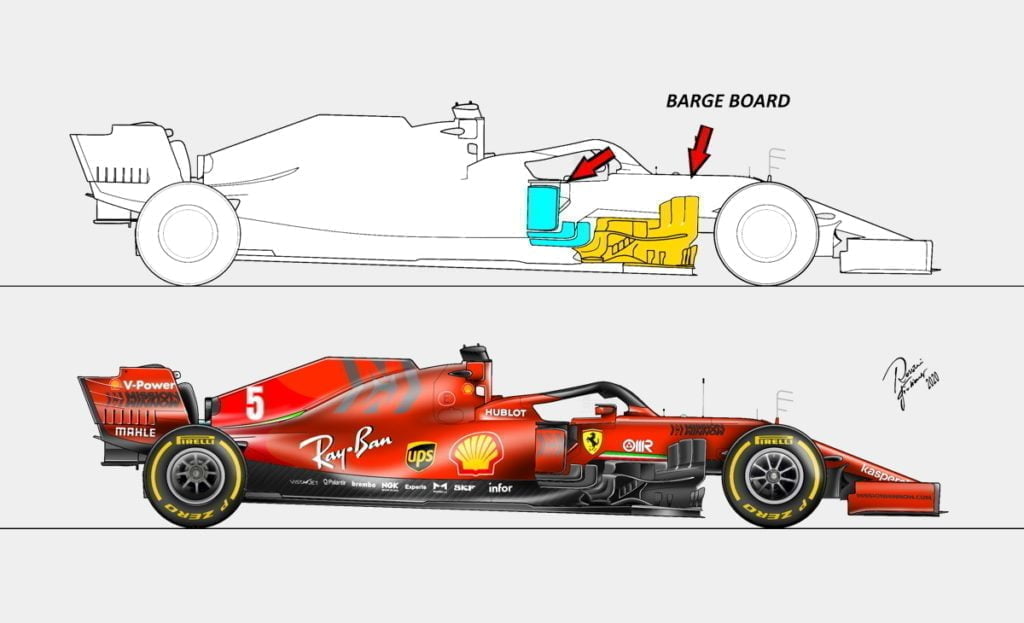Bargeboards

The turning vanes or bargeboards is an aerodynamic device mounted towards the front of the chassis, close to the floor. They are responsible for channeling the airflow towards the downforce-producing devices of the car like the diffuser.
While simple in concept, teams have experimented with more complex bargeboard designs, to maximise the downforce produced. It is uncommon to have as much as 30 elements inside a bargeboard assembly.
The ‘Boomerang’

The boomerang section is an informal term to identify the boomerang-shaped structure at the bargeboard section of the chsasis. The purpose of this feature is counter-intuitive - to produce lift.
Why?
There are certain airflow, particularly from the wheel, which is turbulent and cannot be used or channeled to be useful in producing downforce. It would be undesirable to interfere with the ‘cleaner’ laminar airflow that would flow to the diffuser.
This is what the boomerang aims to avoid - by generating lift, it creates a higher-pressure region around it, thus preventing turbulent air from mixing with the laminar air near the body, mitigating the impact of the interference and preserving as much downforce.
Vortex-generating elements

The bargeboard array would often contain many of these small elements that are angled in various directions, like the one in the diagram above. The purpose of these is to generate vortices that help align the airflow that have been turned by the main bargeboard element and the front wheel, which would accelerate the airflow.
The greater the extent of the acceleration, the greater the downforce effect.
References
https://www.formula1.com/en/latest/article.tech-tuesday-why-is-the-boomerang-so-fashionable-in-2019.2u5tq6Y3FV6P35f5bIp11G.html
https://www.formula1.com/en/latest/article.tech-tuesday-the-lowdown-on-2018%27s-key-aerodynamic-developments.2N1IxDVHjGSaiAaO4cGYIW.html